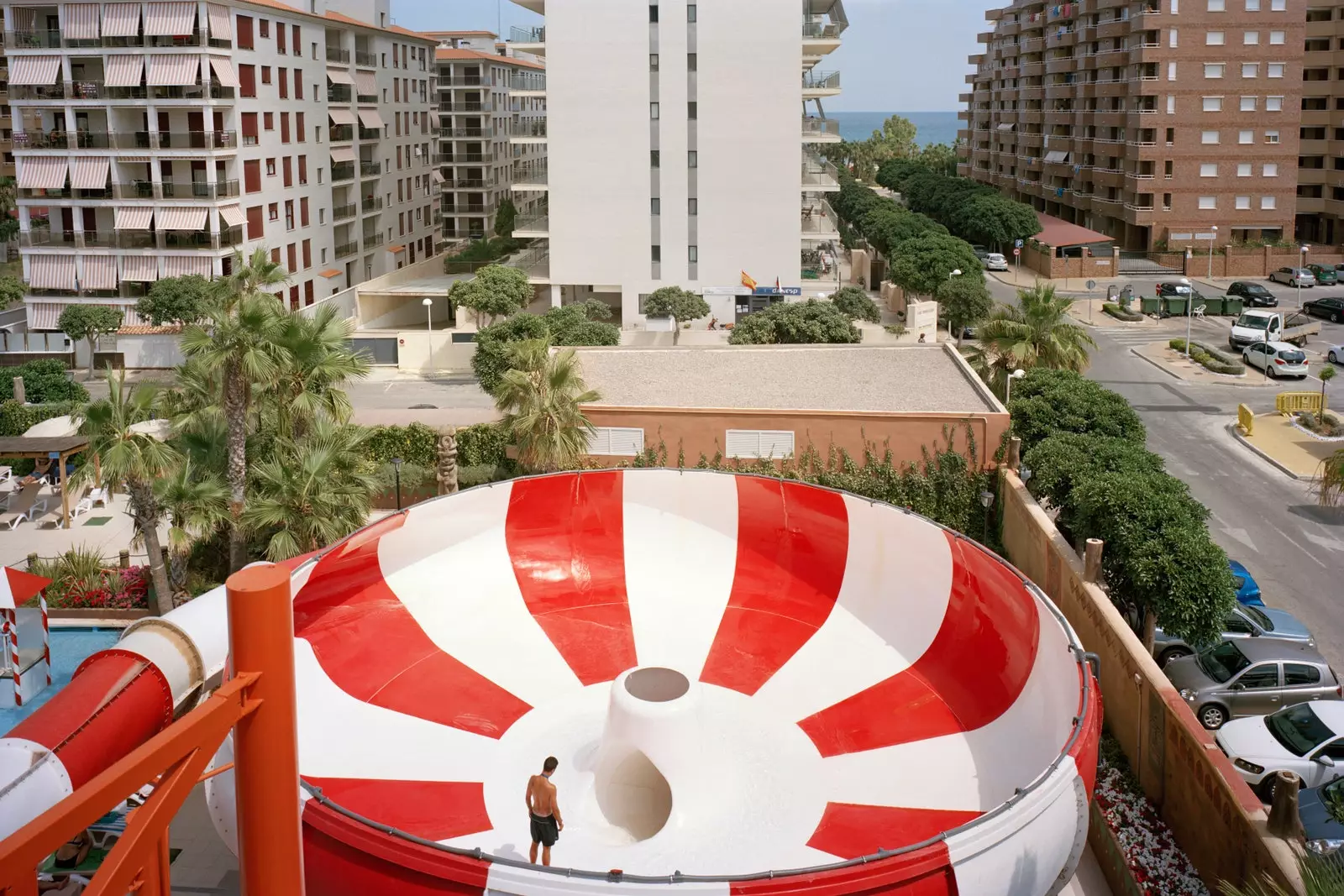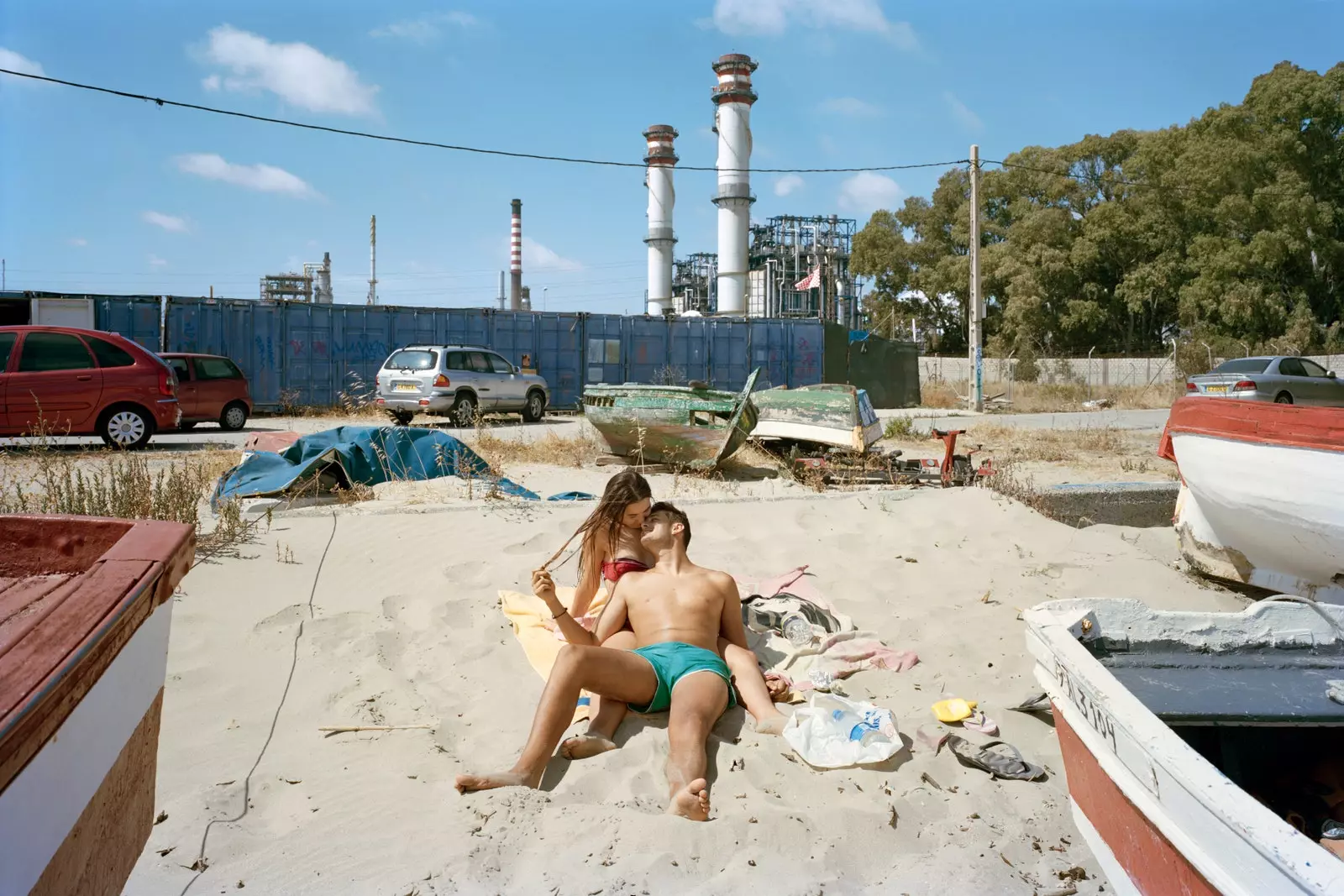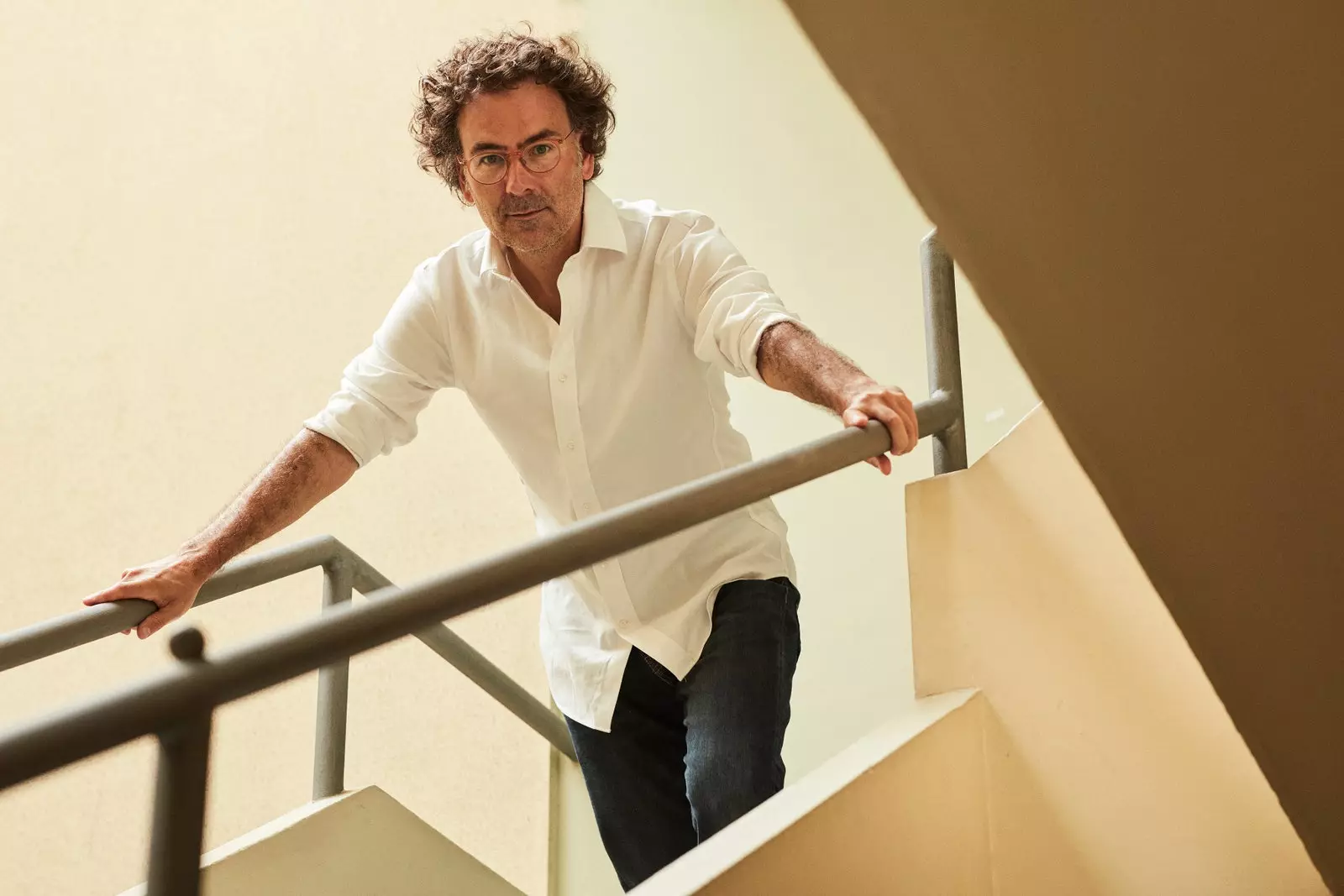Perfect Day is the (sharp and refined) title with which the exhibition of the photojournalist Txema Salvans which is about to open (from September 15 to November 21) at the Foto Colectania Foundation in Barcelona (Passeig Picasso 14). And it is not just any title, but one that encompasses with ironic subtlety everything that, on a daily basis and without any artifice, he was capturing with his camera between 2005 and 2020 on the Mediterranean coast, from Girona to Algeciras.
They say from Foto Colectania that, with his characteristic formal and conceptual style, Salvans has focused on the amazing places where we spend our leisure time, using 'the filter' the irony to help us understand the dimension of the tragedy, while he invites us to question the stereotypes about the overexploitation of our tourist coastline. So we wanted to ask the photographer about this and other issues, whom we would not think of qualifying as an 'exceptional witness' because that is exactly where the issue lies, that what seems to us an exception in his photos is (almost almost) the norm.

Oropesa del Mar (Marina d'Or), from the series Perfect Day, 2005-2020
Conde Nast Traveler: Could we say that reality is stranger than fiction in your photos?
Txema Salvans: I'll answer you with a quote from Frank Herbert's book Dune: “In the depths of our unconscious there is an obsessive need for a logical and coherent universe. But the real universe is always one step ahead of logic."
I photograph the result of a way of doing things, of a culture, of a political model that, in the case of Mediterranean, has brought him to the brink of the abyss. I think that as an artist I move well in that abyssal space, I would even say that I enjoy the views.
“I photograph the result of a way of doing things, of a culture, of a political model that, in the case of the Mediterranean, has taken it to the brink of the abyss”.
CNT: How much imposture is there in them? Are they all real characters or are some fictional characters representing a concept?
ST: perfect day is a documentary work, in the most classic style, that is, trying as much as possible not to interfere with what is happening. A priori, my characters have freely decided to be there, somehow my images also speak of free will or the free capacity of decision. But are we really free? Surely we are free to decide what we buy, but not what we want. And in the end it is on desire that they are built the big frustrations.
I believe that our freedom resembles that of plankton: living organism with little or no ability to move at the mercy of currents and tides.

San Roque, from the series Perfect Day, 2005-2020.
CNT: Is (photographic) irony the most effective way of denouncing a problem or an unpleasant reality?
ST: yes i think irony is an effective tool to communicate, It allows me to leave the photos more open and for the viewer to fill them with meaning. Tragedy and comedy, a perfect balance, like life itself.
These photos challenge the viewer, a spectator who has surely been the protagonist of similar scenes. Perfect Day is a project full of paradoxes and here is one: speaks of the Mediterranean, without the sea appearing. Another, that the strategy is to use a large format camera, a camera that in the eyes of the people is too technical and complicated a device to be dangerous. The great paradox is that, the more complicated it is the liturgy when taking an image, the more visible I am, but the more unnoticed I go.
“Perfect Day is a project full of paradoxes and here is one: it talks about the Mediterranean, without the sea appearing”.
CNT: What is the biggest aberration you have seen on the coast?
ST: We are heirs of the violence exerted on the landscape, and the Mediterranean has been deeply wronged. However, we have adapted. The great paradox of the human species is that our incredible physical and emotional resilience allows us to adapt to any situation. Where other species would give up, we are able to hold on a little longer. We are an opportunistic species. To the point of living on the brink of dystopia. That is the 'aberration'.

Portrait of the photojournalist Txema Salvans.
CNT: Or there is nothing that surprises you anymore...
ST: I believe that our capacity for surprise depends on our knowledge. We are amazed at what a drone can do because we don't understand its technology, we are amazed at what a person can do because we don't know the biochemistry of their brain, it amazes us what our politicians can do because we don't know the real strategies that move them...
"This rupture in the relational thread between nature and human beings is the most dystopian change that human beings have suffered."
With the technological and cultural leap of the Neolithic we went from controlling and dominating the middle of the niche to which we belong to being a piece in a gear, and many times one perceives that the gear is full of sand. What has changed is the relationship between human beings and nature. While traditional hunter-gatherer-based cultures feel part of nature, of a whole –and they themselves belong, in their cosmogonies, to that nature–, for the Neolithic producer, nature has come to belong to him as a being.
That break in relational thread between nature and human beings It is the most dystopian change that the human being has suffered. The being ceases to belong to the whole to be the whole that belongs to him. And so we are…
SUBSCRIBE HERE to our newsletter and receive all the news from Condé Nast Traveler #YoSoyTraveler
